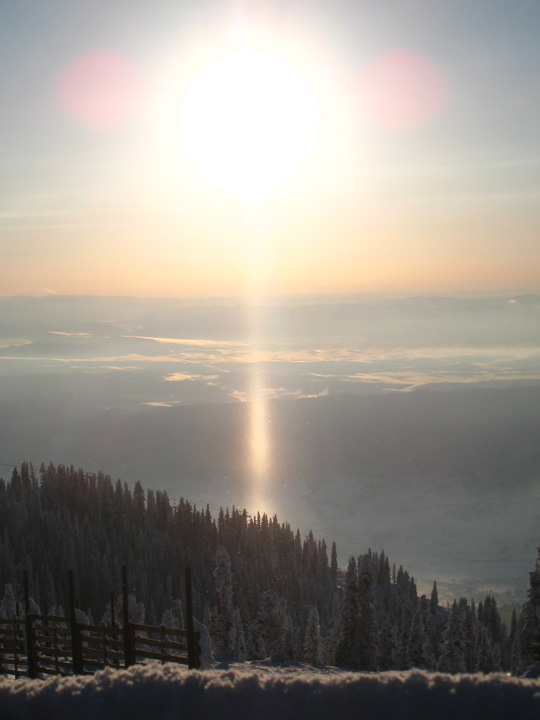Diehard fans of the hit television show Lost, which will air its final episode Sunday, know that the Swan (station number 3 of the mysterious Dharma Initiative) was designed to study strange electromagnetic fluctuations emanating from a tropical island in the South Pacific.
Likewise, thanks to an old orientation video about the Swan that turned up during the second season, they know that the station houses a computer that requires a code be entered and a button pushed every 108 minutes to avoid unleashing powerful forces capable of destroying the island and perhaps all of Earth.
And, finally, they know that Desmond Hume, a character from the show (named after influential Scottish philosopher David Hume), took the instructions in the video to heart and pushed the button fastidiously for years.
What they surely don’t know, regardless of how many hours they’ve spent scouring Lostpedia or regaling perplexed coworkers with Lost trivia, is that engineers for NASA’s Glory mission have a computer and button of their own at the University of Colorado’s Laboratory for Atmospheric and Space Physics (LASP) that’s keeping them up at night.
LASP’s button is related to a “24-hour test”, which is one of many tests that engineers have performed prior to Glory’s expected November 22 launch to ensure the climate satellite will be capable of handling the harsh environment of space. The test required that engineers at LASP follow a protocol nearly identical to Desmond’s notorious button routine.
The protocol was so similar that LASP engineer Patrick Brown, a hobbyist videographer and the person responsible for designing the pointing system of an instrument aboard Glory that will monitor the sun’s irradiance, was inspired to pull together an orientation video of his own. We checked in with Brown to learn more.
Does the clip show an actual test or is it just a spoof?
It’s actually real. The 24-hour test is a comprehensive simulation where we power the spacecraft and both of Glory’s science instruments on to simulate the orbit motion of the spacecraft; it helps to make sure the electronics are working well together. It’s sort of a “day-in-the life” test. LASP was responsible for continuously monitoring Glory’s TIM instrument during the test.
So why make this test into a Lost spoof?
As we were talking about the test protocol, I came to realize it was quite similar to the Lost button-pushing scenario. I suggested jokingly that we should make a parody, and I just did it one night after work. Everything that’s in the video is correct in terms of how we monitor the TIM during the 24-hour-test. It’s almost a 1-to-1 parallel. During the test, we actually had to call Orbital Sciences in Virginia, where the spacecraft was, every 100 minutes to tell them to turn on the “stimulus”.
What is the “stimulus”?
As part of the test, we have stimulus lamps that simulate the sun. Every one of Glory’s orbits will take about 100 minutes, but we spend approximately 60 minutes in the sunlight and 40 minutes in the dark. We have to have the stimuli lights powered on when to simulate the time we’re in the sunlight and turned off to simulate the time Glory will be in Earth’s shadow.
Do the people on your team look forward to this particular test?
We divide up the time and have about four hour shifts, but the 2 am to 6 am shift definitely isn’t popular. Most of them time you’re looking at the screen, and there’s nothing happening. Still, you have to keep a close eye on the computer, and you can’t use the computer to do anything other than monitor the TIM instrument.
Who have you showed your video to and how did they react?
My coworkers have all seen it, plus my family and friends. The people who know both Lost and Glory absolutely love it. People who aren’t wrapped up in the whole Lost phenomenon have a harder time understanding the irony.
Who’s your favorite Lost character?
That’s a good question, but it would have to be Desmond.
–Adam Voiland, NASA’s Earth Science News Team





 readily detectable by satellite instruments in
readily detectable by satellite instruments in 



 One-sixth of the world’s population relies on melted snow for their freshwater, which means good estimates of snow are critical for making realistic predictions of a region’s water supply.
One-sixth of the world’s population relies on melted snow for their freshwater, which means good estimates of snow are critical for making realistic predictions of a region’s water supply..jpg)